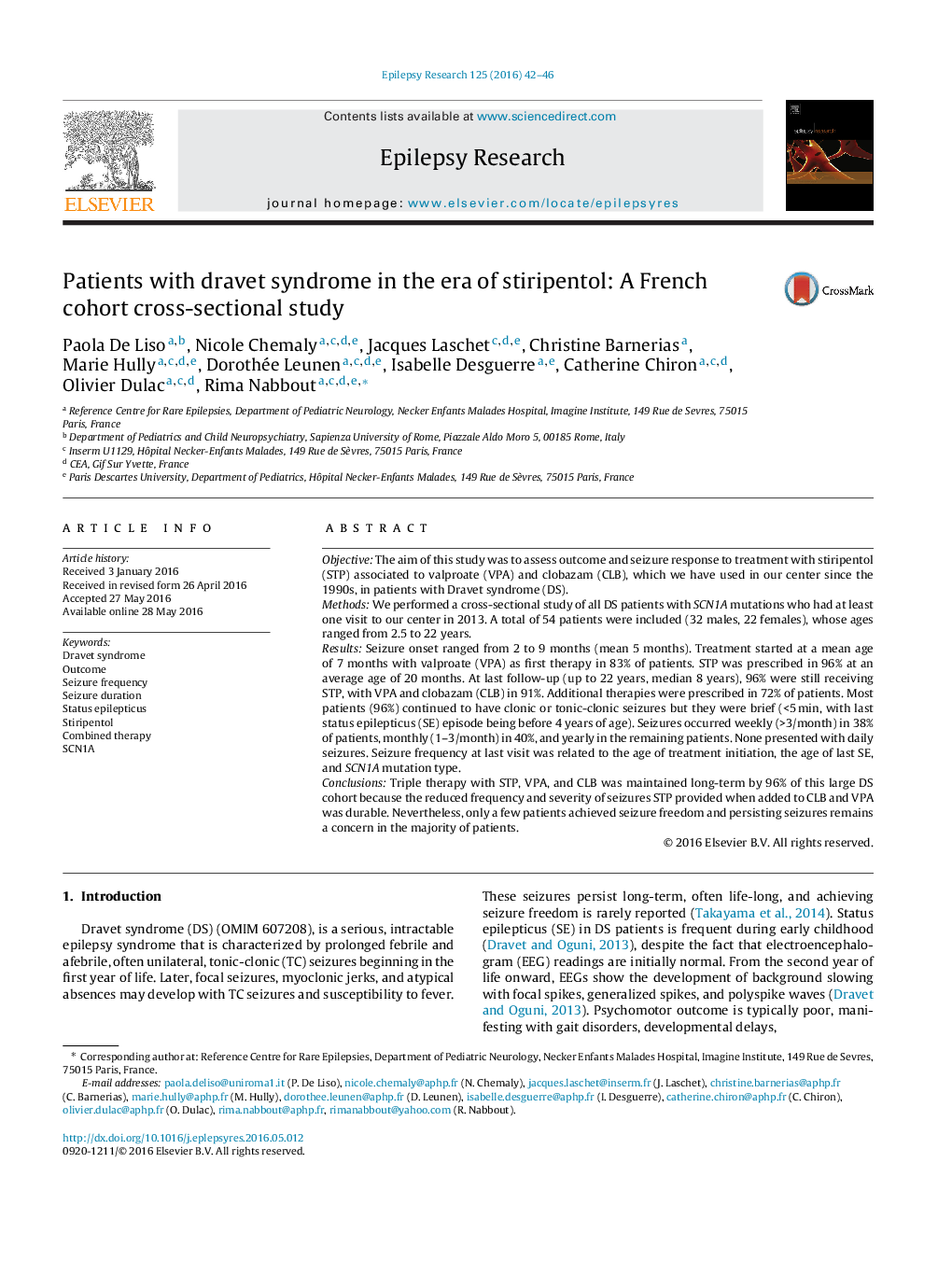| کد مقاله | کد نشریه | سال انتشار | مقاله انگلیسی | نسخه تمام متن |
|---|---|---|---|---|
| 3051907 | 1579898 | 2016 | 5 صفحه PDF | دانلود رایگان |
• Long-term seizure outcome in a large cohort of DS treated with CLB-VPA-STP combination.
• Reduced frequency and severity of seizures STP-CLB-VPA provided was durable.
• Higher seizure frequency was related to delayed therapy and delayed control of SE.
• Truncated SCN1A was correlated with higher seizure frequency.
• 96% of patients still had seizures at a median follow-up of 8 years on CLB-VPA-STP.
ObjectiveThe aim of this study was to assess outcome and seizure response to treatment with stiripentol (STP) associated to valproate (VPA) and clobazam (CLB), which we have used in our center since the 1990s, in patients with Dravet syndrome (DS).MethodsWe performed a cross-sectional study of all DS patients with SCN1A mutations who had at least one visit to our center in 2013. A total of 54 patients were included (32 males, 22 females), whose ages ranged from 2.5 to 22 years.ResultsSeizure onset ranged from 2 to 9 months (mean 5 months). Treatment started at a mean age of 7 months with valproate (VPA) as first therapy in 83% of patients. STP was prescribed in 96% at an average age of 20 months. At last follow-up (up to 22 years, median 8 years), 96% were still receiving STP, with VPA and clobazam (CLB) in 91%. Additional therapies were prescribed in 72% of patients. Most patients (96%) continued to have clonic or tonic-clonic seizures but they were brief (<5 min, with last status epilepticus (SE) episode being before 4 years of age). Seizures occurred weekly (>3/month) in 38% of patients, monthly (1–3/month) in 40%, and yearly in the remaining patients. None presented with daily seizures. Seizure frequency at last visit was related to the age of treatment initiation, the age of last SE, and SCN1A mutation type.ConclusionsTriple therapy with STP, VPA, and CLB was maintained long-term by 96% of this large DS cohort because the reduced frequency and severity of seizures STP provided when added to CLB and VPA was durable. Nevertheless, only a few patients achieved seizure freedom and persisting seizures remains a concern in the majority of patients.
Journal: Epilepsy Research - Volume 125, September 2016, Pages 42–46
